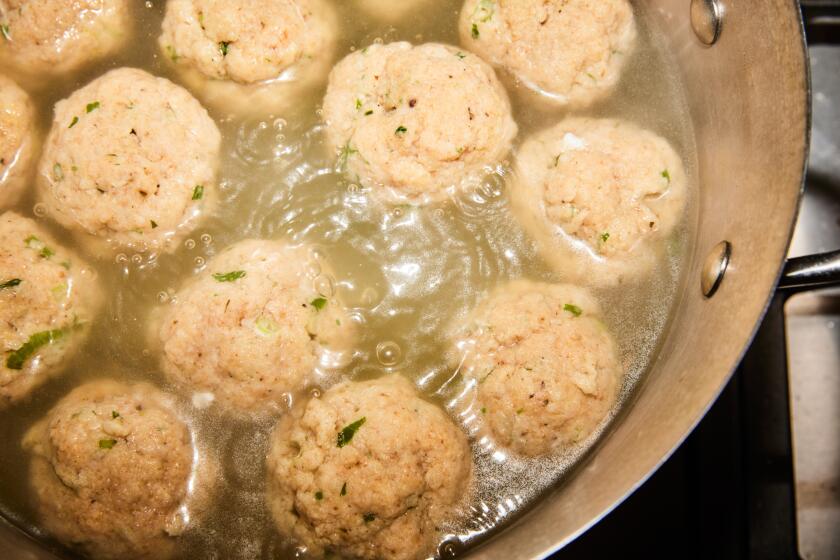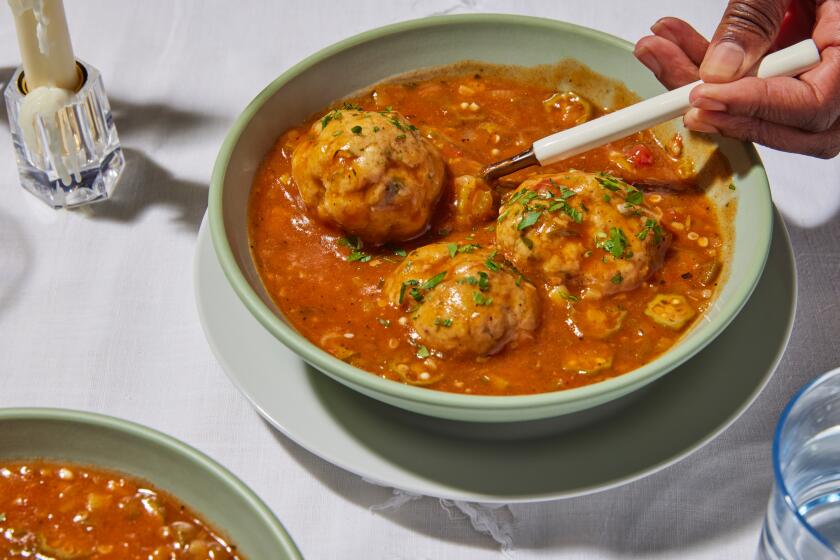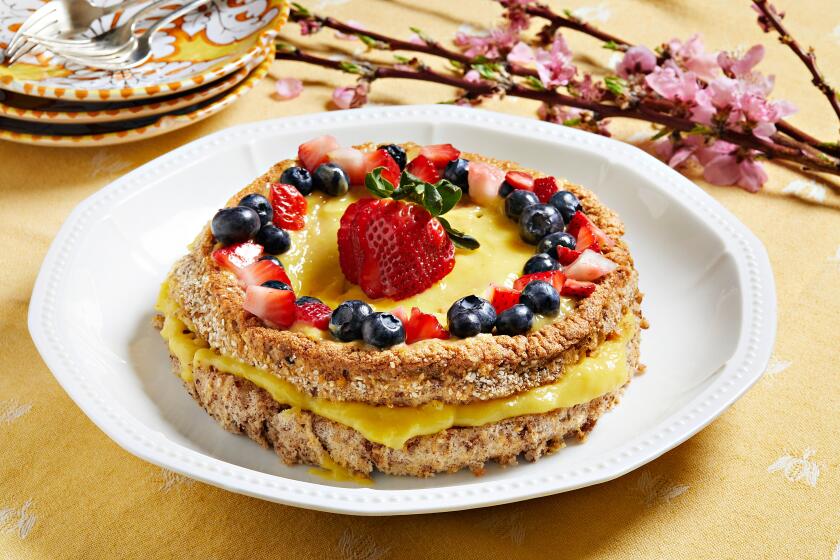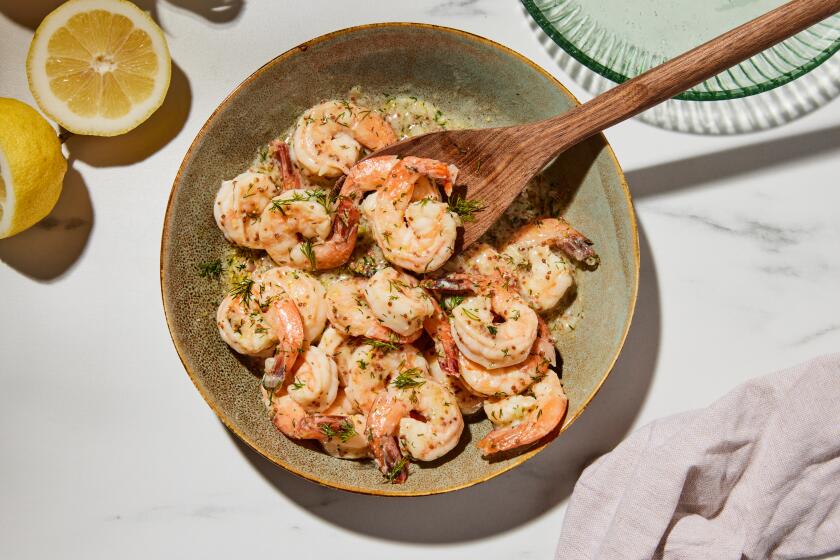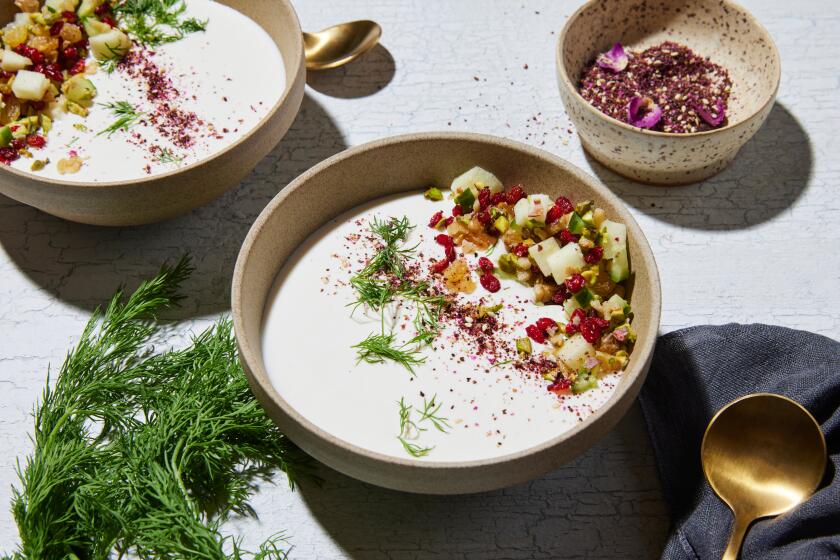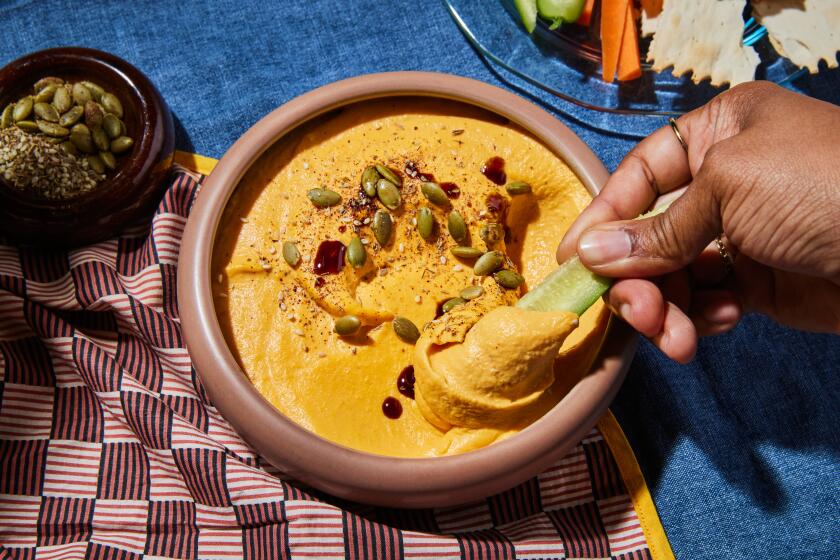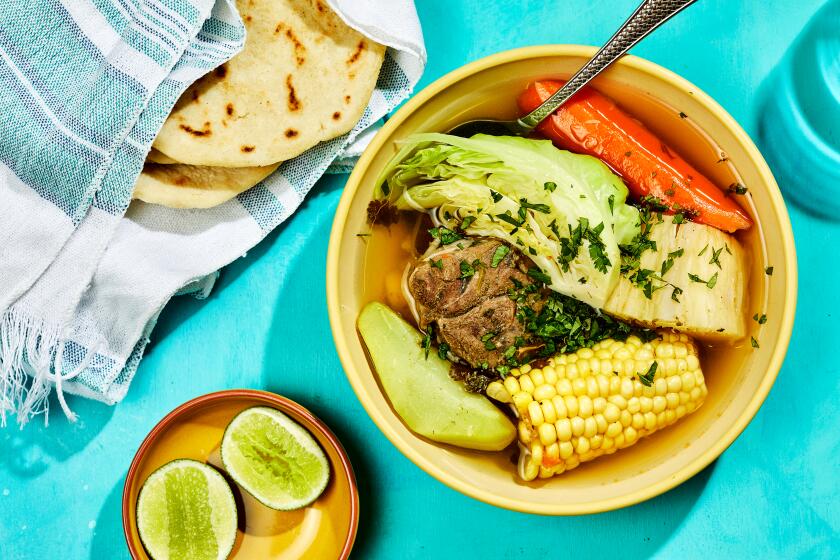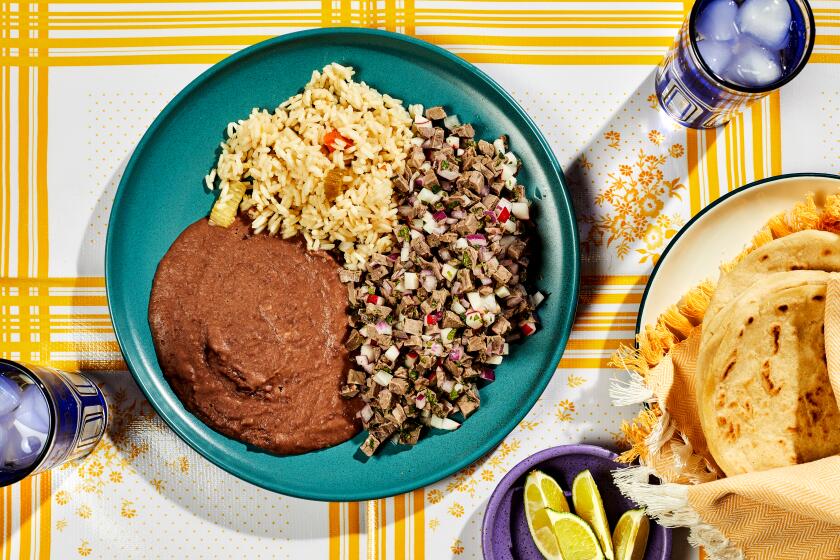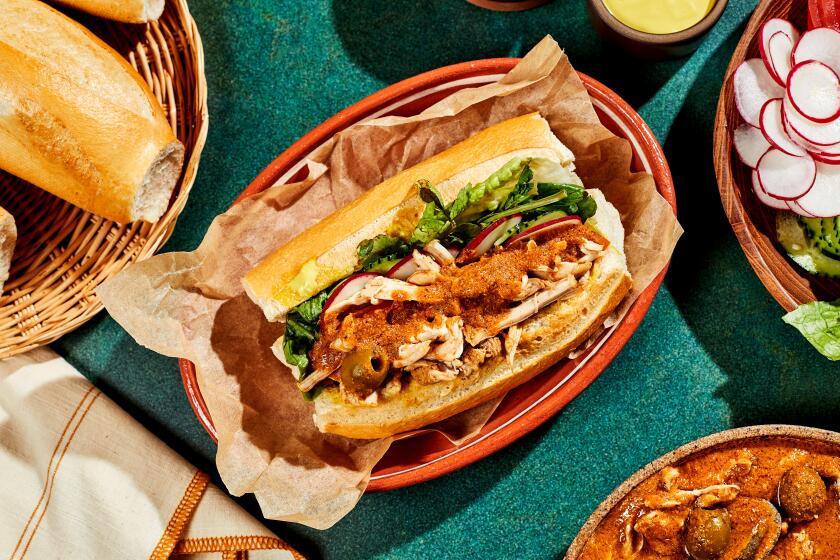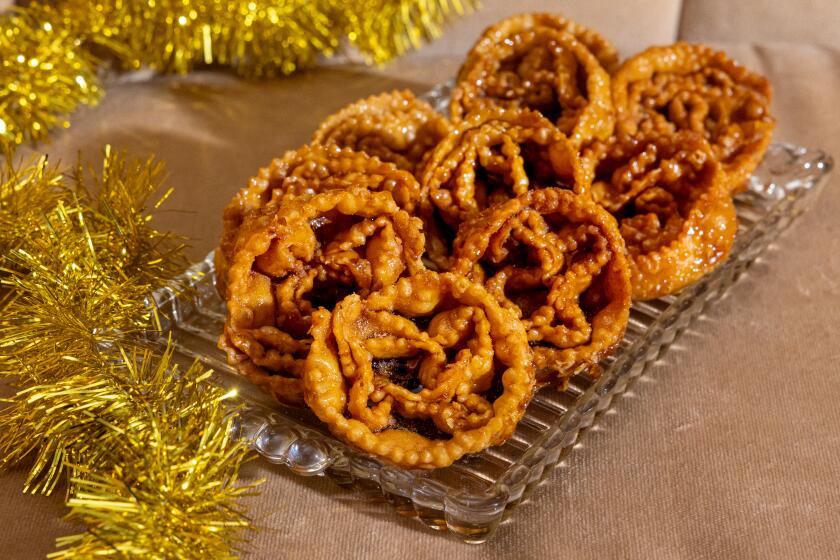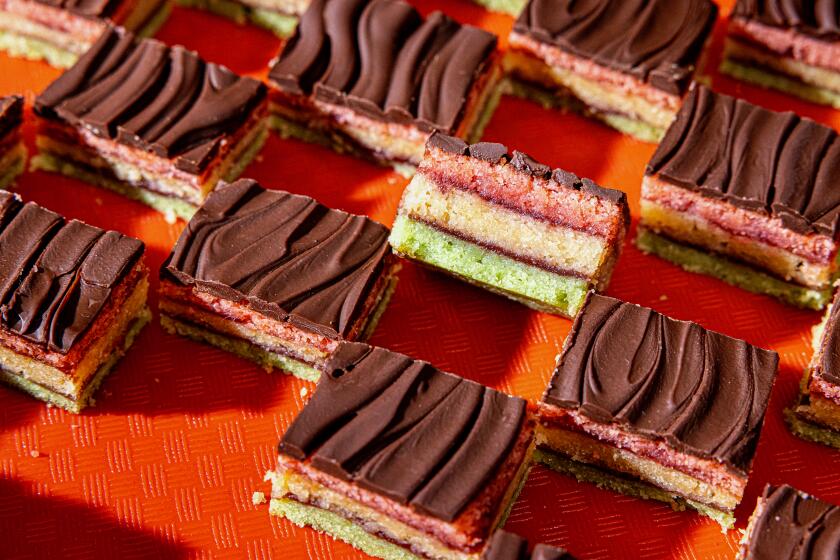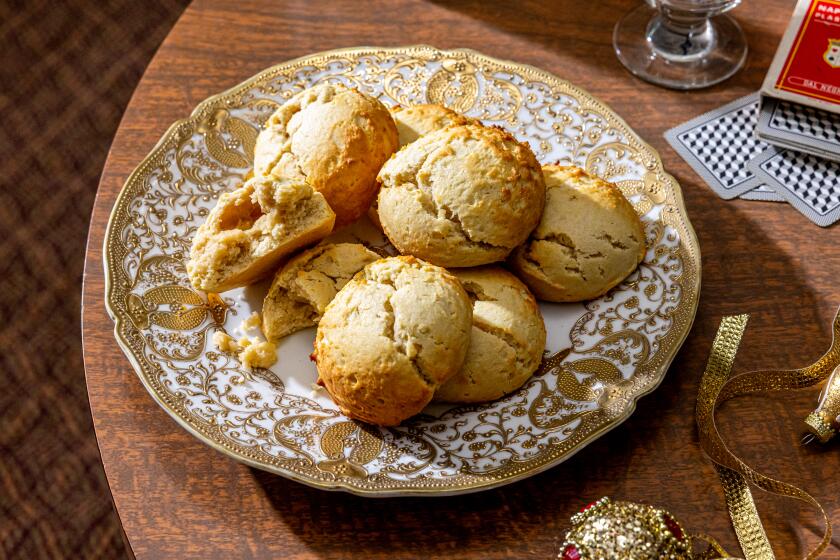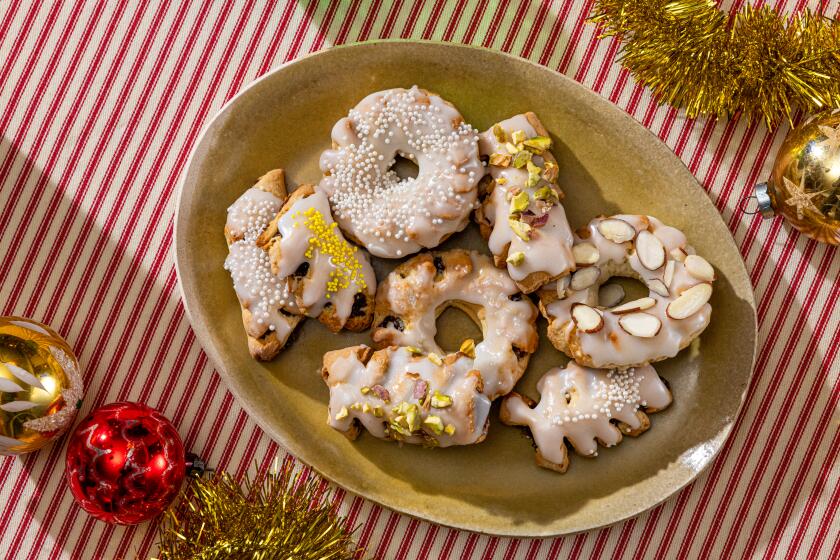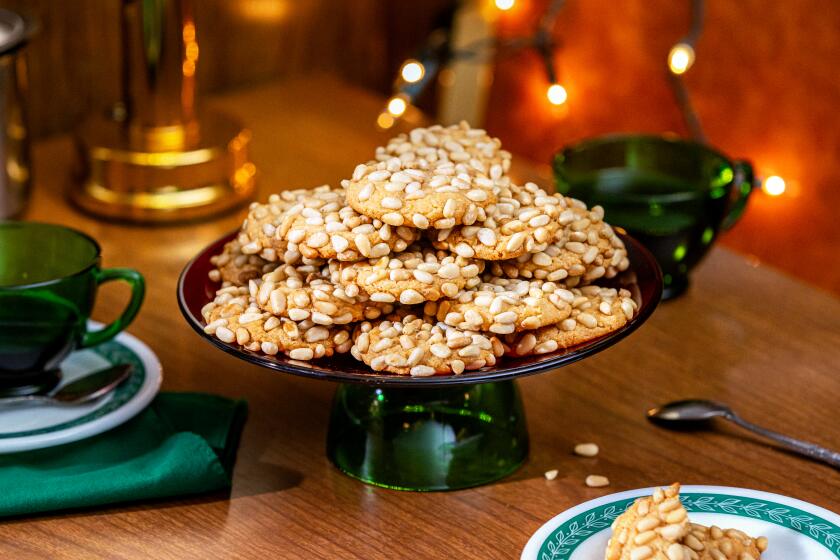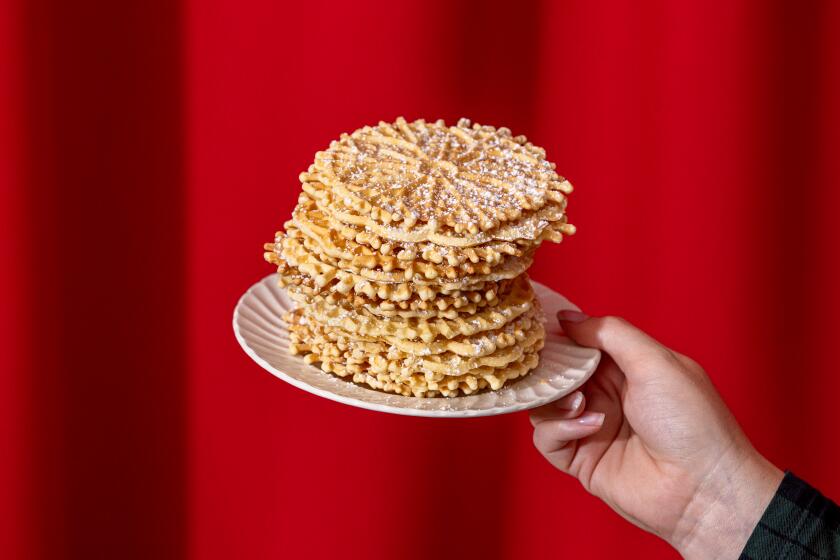Celestial chocolate cake
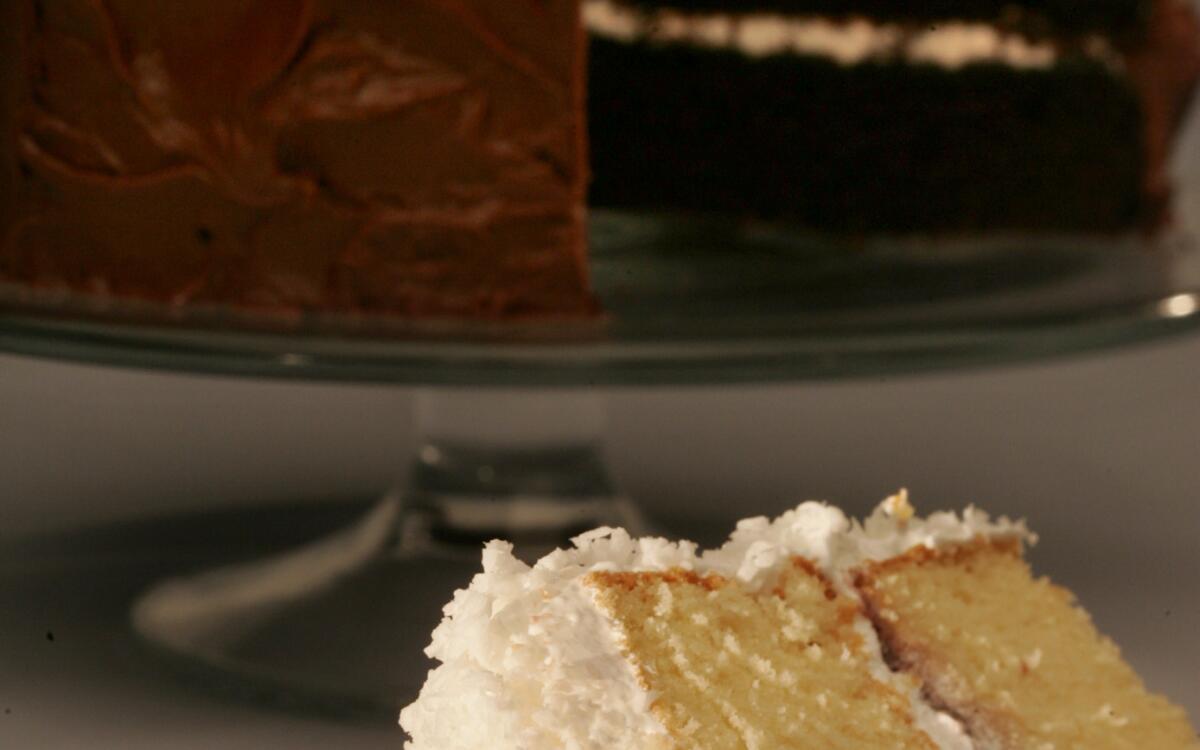
In a climate like the American South’s, you’d think people would want light, refreshing desserts -- sorbets, maybe. Actually, Southerners are crazy for cake.
Crazy-kooky-nutsy, with frosting on it. They make fruitcakes, angel cakes, chocolate cakes, pound cakes, layer cakes of all kinds (they can’t get enough of coconut cakes). They have varieties you may never have heard of, such as Laine cake (a white cake with fluffy white frosting and a custardy coconut, raisin and nut filling), and they keep inventing more.
Some are homey treats based on molasses or dried fruit, but the majority are madly rich. Most of the 64 recipes in Nancie McDermott’s just-published “Southern Cakes” call for reckless quantities of cream, butter, sugar and eggs.
The resulting cakes tower grandly, they’re plushly frosted, they ooze filling. Just try to resist them. It will be a lesson in humility.
McDermott, who lived in Irvine and Carlsbad from 1985 to 1999, learned about Thai food while serving in the Peace Corps and is best known for her half adozen books on Southeast Asian cooking. Then she surprised Southern California’s foodies by moving back to her home state of North Carolina.
The Asian cookbooks kept coming, but now here’s “Southern Cakes,” showing that the persimmon doesn’t fall far from the tree after all. On returning to the South, she writes, she has enjoyed taking “a long, sweet look at Southern food in general and Southern baking in particular.”
For a generation, people have been amazingly impressed when anybody makes a cake from scratch. In fact, as I found when cooking my way through eight recipes in this book, it’s absurdly easy. Your mixer creams the butter and sugar with no effort from you, then you mix in the eggs, liquid and flour, and bingo: batter. The baking part is no more difficult than with a mix.
True, frostings can be more troublesome, and I tend to trust a candy thermometer when higher densities of sugar syrup are involved, rather than relying on the traditional method of evaluating thread or soft-ball stages. My main criticism of McDermott’s book is that I wish she had put in temperatures more often for the frostings. Otherwise, these recipes are very well worked out, written clearly enough for a novice to handle.
There is a specific Southern repertoire of cakes, such as the fabled Lady Baltimore (a white cake with seven-minute frosting and fruits and nuts in the filling). Still, a lot of Southern cakes are local variations on ideas familiar elsewhere. Everybody makes devil’s food cake, right? Aha, but not necessarily with a whipped-cream filling, as in Celestial chocolate cake.
And Southerners are still alive to the charms of an old-fashioned yellow cake with chocolate fudge frosting. The recipe for Sybil Pressly’s buttermilk cake in McDermott’s book has a faint buttery tartness, and its frosting gets a spicy bite from brown sugar. These are attractions many of us have denied ourselves in our mad quest for ultra-chocolate cakes.
Hummingbird cake is essentially a carrot cake made with pineapple, bananas and pecans in place of the carrots. So it’s moist and exotic, and, characteristically, makes no pretense of being health food. Slathered with cream cheese frosting, it is definitely not going to leave you as slender as a hummingbird. On top of all those seductions, it’s about the easiest cake in the book -- you don’t even have to cream butter, just stir the ingredients together.
The thing Southern cake-makers are perhaps best known for is a goofy fondness for strange ingredients. They may put in mayonnaise (well, it’s basically egg yolks, oil and lemon juice, so why not?) or even tomato soup. “Southern cooks don’t keep the key ingredient a mystery,” McDermott writes, “we find quirkiness attractive, and tomato soup cake is pretty, easy and simply delicious.”
In the quirk department, take orange slice cake, basically a cross between date-nut bread and an orange-glazed fruit cake, except for the presence of orange slice candies from a cellophane bag in the supermarket candy aisle. That may sound bizarre, but the chopped orange slice candies work perfectly well in cake. Think of them as a substitute for candied citron peel, with a more pleasant jelly-candy texture.
Every recipe has a charming headnote, often showing a bit of historical research, and about a third are illustrated with color photos. McDermott’s handy introductory chapter on cake baking includes the very Southern advice to buy butter on sale and keep it in the freezer “so you are baking-ready 2 4/7.”
--
Delicious cake, dazzling frosting
The “everyday” cakes include Ocracoke Island fig cake (a spice cake from North Carolina’s Outer Banks, made with figs and walnuts and topped with a buttermilk glaze) and a blueberry cake (pretty much blueberry muffins baked in a cake pan) from the Shenandoah Valley of Virginia. Along with these homey items, McDermott presents a couple of wild ones. Japanese fruitcake is not Japanese in the slightest -- it’s four alternating layers of fruited and plain cake with a filling of lemon coconut glaze. This is one case in which McDermott’s research has turned up no explanation for the name. (I suspect Southerners thought it looked like a pagoda.)
For my money, the grandest-looking cakes in this book are the brown sugar pound cake baked in a tube pan with a lush mass of caramel glaze drooling down its sides, and the classic coconut cake, with its feathery, dazzling white frosting. When I brought the coconut cake to the office, people in the street were literally lunging at it.
That’s the thing about this book. I’ve always been a pie-oriented guy, insofar as I’ve bothered with dessert at all. McDermott has made a convert of me. She’s shown me that if you want to impress people all to heck, nothing beats a great big cake loaded with frosting.
Call me crazy. But first, have just one slice. . . .
Cake
Heat the oven to 350 degrees. Grease and flour three 9-inch round cake pans.
Place the cocoa in a small mixing bowl and pour 2 cups boiling water over it. Stir well with a fork until smooth, and set aside to cool.
Put the flour, baking soda, baking powder and salt in a medium bowl and stir with a fork to mix well. Set aside.
With a mixer, beat the butter and sugar at high speed until well combined. Add the vanilla and then the eggs, one at a time, beating well after each until the mixture is smooth and light.
Add the flour mixture in four batches, beating after each addition only until the flour disappears. Alternate with the cocoa mixture in three batches, beating after each just enough to combine everything into a smooth, luscious batter, stopping once or twice to scrape down the sides of the bowl.
Divide the batter among the three cake pans. Bake until the cakes spring back when touched lightly in the center and are beginning to pull away from the sides of the pans, 25 to 30 minutes.
Place the cake pans on wire racks and cool the cake layers for 10 minutes. Then gently turn them out onto wire racks to cool completely, top side up.
Whipped-cream filling
In a mixer bowl, combine the cream, sugar and vanilla and beat until thick and luscious. Cover and refrigerate until you are ready to complete the cake.
Chocolate frosting
In a medium saucepan, combine the chocolate bits, cream and butter. Cook gently over medium heat, stirring often to help the butter and chocolate to melt, and to avoid letting the mixture come to a boil. When the chocolate and butter have melted, transfer the mixture to a medium bowl and allow it to come to room temperature. Add the powdered sugar and beat well at medium speed until thick enough to spread, stopping often to scrape down the bowl.
To complete the cake, place the first layer, top side down on a serving plate and spread half the whipped cream filling almost to the edge. Cover with a second layer, top side down, and spread the remaining whipped cream filling. Place the third layer, top side up, over the filling. Spread the chocolate frosting over the sides and then top of the cake.
Get our Cooking newsletter.
Your roundup of inspiring recipes and kitchen tricks.
You may occasionally receive promotional content from the Los Angeles Times.

